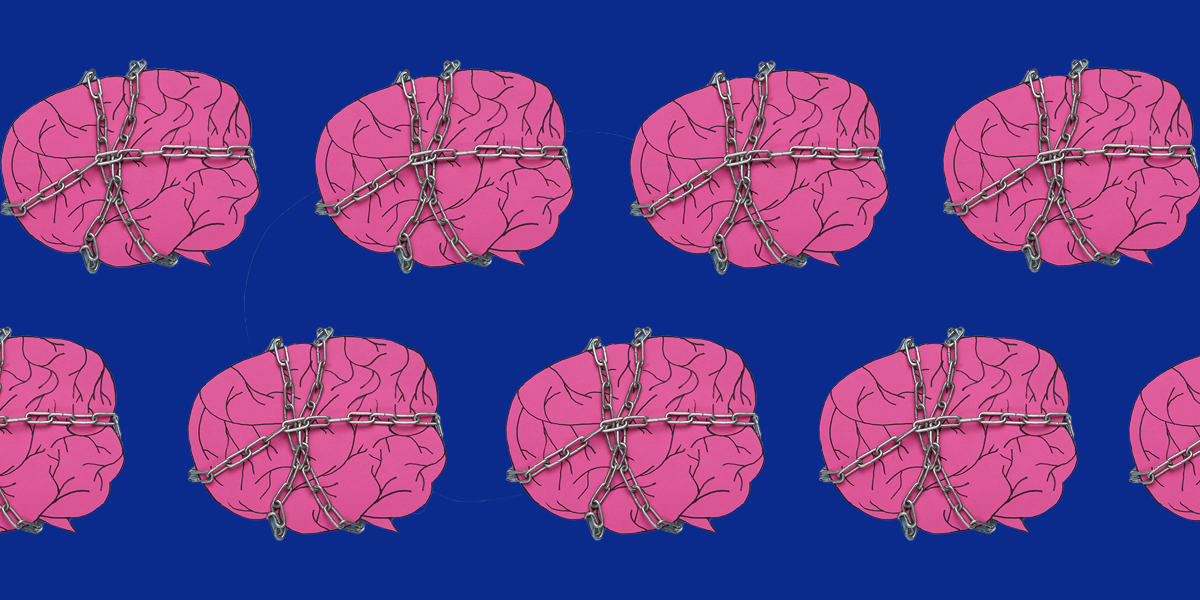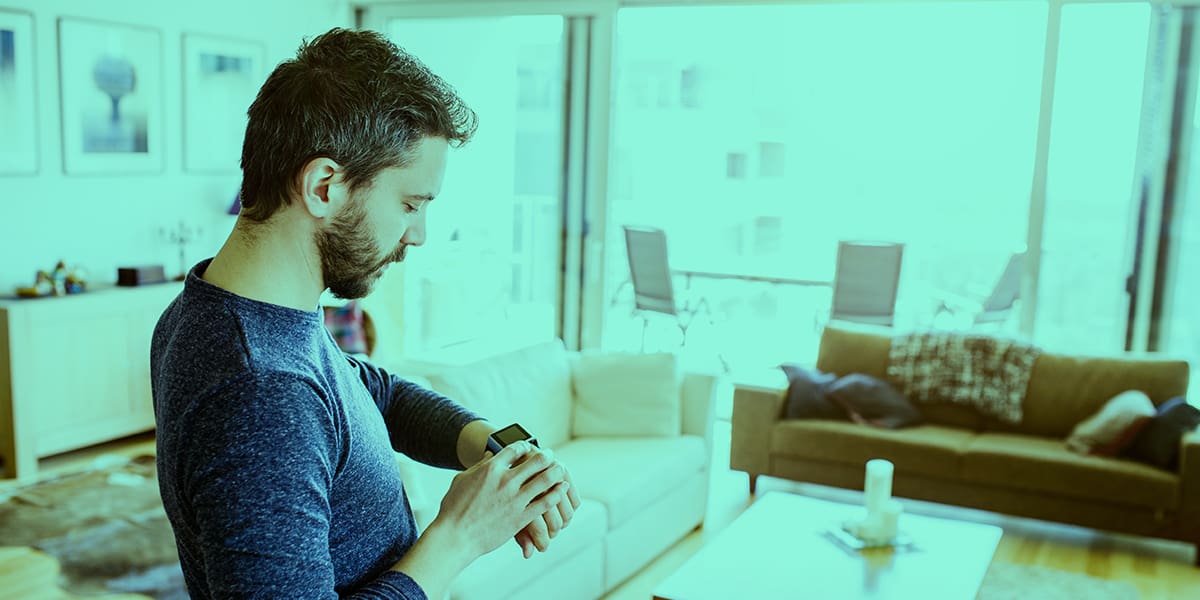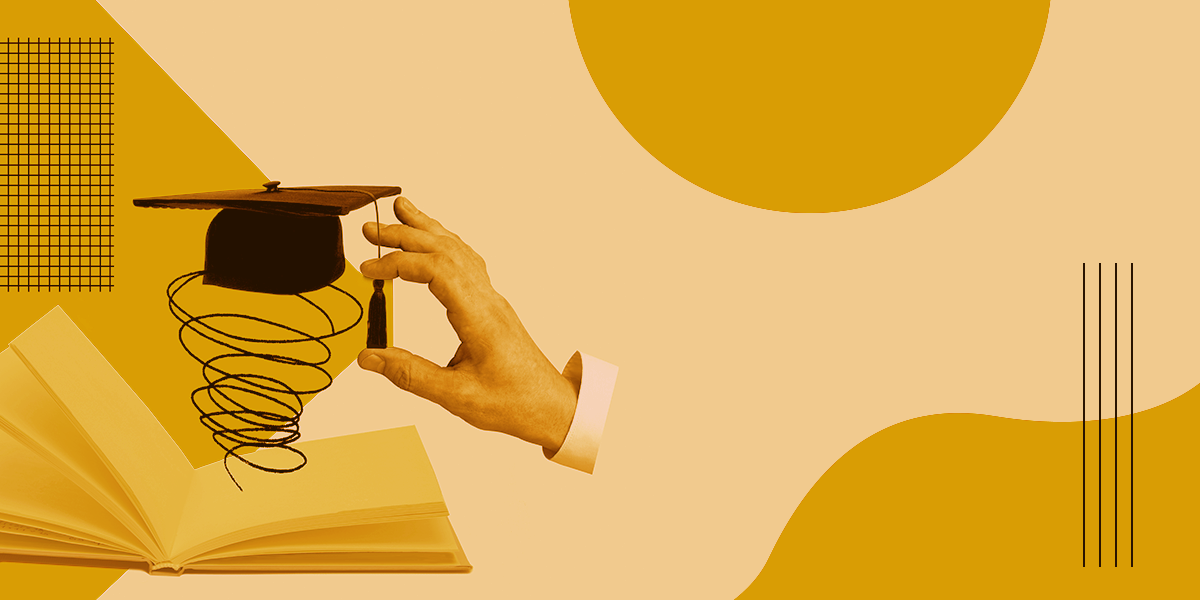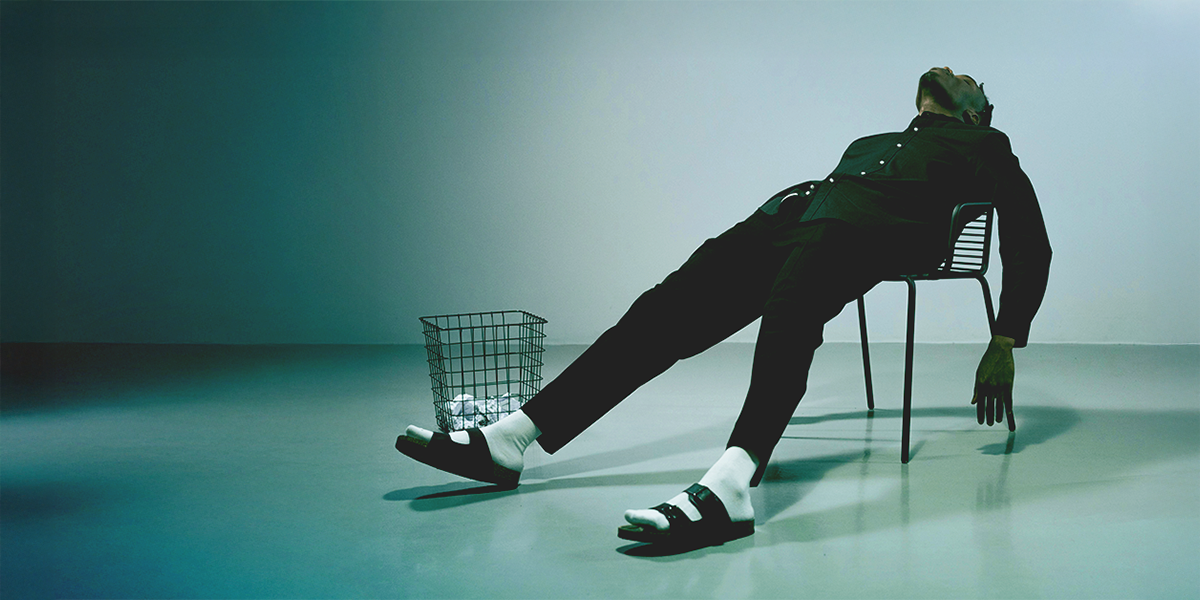
There’s a saying, “good is the enemy of great.” That quote holds a similar sentiment to this idea:
Comfort is the enemy of living life like you mean it.
Being comfortable can leave you in a limbo state where, technically, nothing is wrong, but you’re not living the life you truly want.
This is the trap of life being good on paper. Intentional living is the way out.
The “good on paper” lifestyle seduces you into mediocrity
You should be grateful, right? After all, the quality of your life IS good.
You could live in a third-world country, but you have a home filled with food. You could be poor, but you’re financially stable. You could be stuck in a job you hate, but you have a steady job with good benefits and a healthy work environment.
Sure, you’d like to have more freedom. Maybe you wish you were an artist instead of an accountant. And there’s that nagging whisper telling you that there’s so much more to this life. You’re baffled by the fact that you’re using such a small amount of your potential. But things are good enough. They’re OK.
Life is good on paper.
I’ll use a dating analogy to explain. Attraction and feelings for someone aren’t logical. You can’t convince someone to like you. And sometimes, regardless of the amazing qualities you have, some people just won’t have romantic feelings for you.
This is where a common situation arises. You meet someone who seems to check off every single box on your “ideal partner” checklist. But there’s just no spark. You even wonder why you can’t seem to feel anything because this is exactly the type of person you wanted. If you try to make it work without that underlying sense of real attraction, you’ll always wonder what life would have been like with your soul mate.
This is what it’s like to live a life where you check off all of the boxes society says you’re supposed to check.
You even get validation from other people because you are “successful” in the conventional sense of the world. But you’re still not happy.
You might have a six-figure salary, multiple degrees, luxury vehicles, a nice McMansion in the suburbs, tenure, prestige, and an impressive CV.
Vacations, quality time with friends and family, Netflix to unwind at night. Life is good (on paper).
Your true desires might not be conventional or logical, but you still want them. And ignoring them for the sake of comfort leads to a massive pile of regret when it’s all said and done. The idea of intentional living is always in the background.
As seductive as a life of comfort may be, it never fully quiets the voice that nudges you toward something more. As Henry David Thoreau put it:
“The mass of men lead lives of quiet desperation.”
Comfort is quiet desperation. Designing your life and taking steps to live intentionally is how you break the cycle.
Pain is the pathway to purpose
I use a sales technique to get prospective customers to buy my programs. It’s called the pain threshold. In order for someone to take action, the pain they feel has to be high enough to change.
I find ways to make them realize the extent of their pain so they’re motivated to change.
If you place your hand on a hot stove you’ll move your hand off of it immediately. The pain is so high that you don’t have to consciously think to remove your hand from it. You just do it.
If life worked that way, it would be easier to change our default state and practice intentional living, but it doesn’t work like that.
Instead, life works a lot more like the boiling frog fable:
If you put a frog in a pot and raise the temperature slowly, the frog won’t realize the water is boiling until it’s too late. If you look at the life of someone who ends up living below their potential or not accomplishing their dreams, it’s a lot like that process.
When you’re dissatisfied but relatively comfortable—and not actually hurting—you can rationalize your situation day after day, month after month, and year after year. Until later in life when the pot begins to boil and you realize how much time you’ve wasted.
So, what should you do if you find yourself in a position like this where everything is just OK?
Start by swiping some of my sales techniques and applying them to your life.
Whenever I’m on a sales call, I am trying to find the problem that led the person to book the call in the first place. That’s step one.
After that, I ask how long the problem has been going on. I do this because I want them to understand the severity of the situation.
Life kinda floats by without us noticing, so sometimes it takes the act of stopping to think about it to realize:
“Wow, I’ve been procrastinating for years. I’ve wasted years of my life.”
Then, I attempt to help them understand the implications of those problems, meaning I want them to understand the consequences of not making a change.
Ask yourself the same questions I ask my prospects:
- What opportunities have you missed out on as a result of not taking action?
- What is your life going to look like in six to 12 months if you don’t make a change?
- What are the long-term implications? What is your life going to look like if you never make a change?
I want them to visualize themselves years into the future where they kick themselves and think “Why didn’t I just start that business? What was I so afraid of?”
I want them to start to change their priorities. People often prioritize not losing instead of winning. That’s why they need this type of reflection so they can use that same loss aversion and flip it on its head. They realize they’re currently losing out on a better life.
Design your life: Intentional living starts with self-awareness
Intentional living looks like having a B+ level of thought, diligence, and effort when it comes to everything in your life: day-to-day routines, intermediate goals, and long-term plans.
You must decide what you want out of this life. Think about that for a second. You’ve been alive for tens of thousands of hours. How much of that time have you spent in silence, pen and paper in hand, working out what you want from this life?
Your thoughts could be a week or two away from shifting your trajectory I had an old mentor who taught me a strategy to change my life in a short period of time. He said to lock yourself in a bathroom for 48 hours. Bring whatever food and water you need. Then he provided an extensive set of journaling prompts with a bunch of different questions like:
- What kind of person am I?
- What kind of people do I want to associate with?
- What kind of life do I want to live?
- What are my core values?
- What are my strengths?
There were 60+ questions. I didn’t lock myself in a bathroom, but I did answer all of the questions and it gave me a lot of clarity on how I wanted to live. I also executed a lot of goals based on those answers.
There are a bunch of different protocols like this that you can use to practice intentional living (I’ll share them with you in the next sections). Pick and choose which one makes the most sense for you and run with it.
Most people know exactly what they want…
Even when they think they have no clue. It’s usually whatever they would choose to do on a day-to-day basis if they were free of fear.
There are a bunch of different tests that you can take to determine your strengths, weaknesses, and personality traits so that you can create intentional living plans for different areas of your life like your career, your business, and the lifestyle you want to build.
They aren’t scientifically accurate. They aren’t peer reviewed nor have there been replicated experiments that prove their accuracy but, in my opinion, that doesn’t matter because they are simply tools to point you in the right direction.
I used these tools when I was 25 years old, and felt like I was at a crossroads. I wanted to make positive changes. The recommendations these assessments gave me were:
- Have a career where you are rewarded for creativity and ideas → I am a writer and a content creator
- Read a lot of books to strengthen your intellect → the 200+ books I have read since then have either directly or indirectly helped me make millions
- Avoid careers that require too much structure, rigor, and organizational skills → My schedule is never the same day to day nor do I focus on tedious stuff that drains me. I either hire someone or partner with someone who has a strong operational background (another recommendation I received)
Here are the different assessment tools I used:
- Strengths finder
- Enneagram
- Meyers briggs typing index
- Big 5 personality
- The Hexaco personality inventory
After you take these tests they usually give you insights on:
- Careers and lifestyles to pursue
- Daily habits to support those pivots and changes
- Ideas on who to bring into your life to complement your strengths
It’s time to create a new playbook
The entire process to implement these changes is worthy of a whole new essay. I’ve dedicated entire books to the subject. And I’ve written plenty of blog posts on building career capital, goal setting, and overcoming limiting beliefs (see further resources below)—all of which are relevant to intentional living.
The point of this post is to use the insights you discover as a springboard to design your life, which means you consciously decide what to do in the short-term and long-term.
The best time to start is today.
“Spend a minimum of one hour a day doing whatever you are waiting to do until your finances are more secure, or until the children have grown, or until you feel free to do what you really want to do.”
—David Deida
Expand from there. Carve out more time to devote to your purpose. This will likely mean sharpening current skills and learning new ones. Build on the side until you can replace what you’re currently doing with what you truly want. These next sections will show you how to set yourself up for intentional living success.
For more on growing skills and building on the side, check out these posts:
Reset your environment to start living intentionally
Your environment is either supporting your goals or sabotaging them.
There’s no neutral ground.
Look around your living space right now. What do you see? A couch that’s perfectly positioned for binge-watching Netflix? A gaming setup that screams “come waste four hours here”? A kitchen stocked with comfort foods that make it easy to avoid cooking real meals?
Your possessions aren’t just things. They’re votes for the type of person you want to be. And if you’re surrounded by comfort items that make it easy to stay mediocre, you’re voting for mediocrity every single day.
This is where the environment reset comes in. It’s the third pillar of intentional living, after developing self-awareness and acquiring profitable skills.
Rewire your brain with a dopamine detox
Before you can build new habits, you need to understand what’s hijacking your motivation in the first place. Your brain is constantly seeking the easiest path to dopamine, and modern life has made that path ridiculously accessible.
Social media notifications, streaming services, food delivery apps, and online shopping are engineered to give you instant gratification with minimal effort. They’ve turned you into a dopamine addict, and addicts don’t make intentional choices.
Here’s what a proper dopamine detox looks like:
Week 2: Sensory Reset
You’re teaching your brain that stimulation has to be earned.
After two weeks of this, reading a book will feel entertaining. A simple conversation will feel engaging. Working on your goals will feel rewarding instead of torturous.
Purge the possessions that are programming you
Now let’s talk about your stuff. Every item in your home is either moving you toward your goals or away from them.
That expensive coffee machine you never use? It’s telling you that you’re the type of person who buys things impulsively and doesn’t follow through. Those clothes in your closet with tags still on them? They’re reminding you daily that you waste money on things you don’t need.
The physical purge helps you surround yourself only with items that align with the person you’re becoming.
Go room by room. Be ruthless.
That guitar you haven’t touched in three years but keep “just in case”? Unless learning guitar is part of your intentional living plan, it goes.
Those twenty different kitchen gadgets you thought would make you cook more? Keep the one you actually use.
Here’s the rule: If you haven’t used it in six months and it doesn’t support a goal you’re actively working toward, it goes.
Design your environment for success
Once you’ve cleared the clutter, it’s time to intentionally design your space to support your new life.
If you want to read more, create a reading corner with good lighting and zero distractions. If you want to exercise, lay out your workout clothes the night before. If you want to cook healthy meals, prep your kitchen so the healthy choice is the easy choice.
Your environment should make good decisions automatic and bad decisions difficult.
Remove the friction from activities that move you forward:
- Keep a journal and pen next to your bed for morning pages
- Set up your workspace so you can start working immediately
- Prep healthy snacks so you don’t default to junk food
Add friction to activities that hold you back:
- Put your phone in another room when you’re working
- Cancel streaming subscriptions (you can always resubscribe later)
- Remove junk food from your house entirely
Try the 30-day environment experiment
For the next 30 days, live like the person you want to become. Don’t buy anything except necessities. Don’t consume entertainment that doesn’t educate or inspire you. Don’t engage in activities that don’t align with your goals.
Most people are afraid to do this because they think they’ll be bored or unhappy. But after you sit with a bit of tension and boredom you rediscover what genuine fulfillment feels like. You remember what it’s like to be excited about your own life instead of living vicariously through others.
You start to understand the difference between comfort and contentment. Comfort is passive—it’s what happens when you avoid discomfort. Contentment is active—it’s what happens when you align your actions with your values.
Work when and where you want. Yes, really.
How to make intentional living sustainable
After you’ve done the self-reflection work, and reset your environment, the real challenge begins. How do you maintain this momentum without burning out or reverting to old patterns?
Intentional living a never ending practice. Just like exercise and diet must become a lifestyle to stick, you have to make intentional living a part of who you are and build systems and routines to support it, just like your physical fitness.
Monthly audits: Once a month, do a deeper dive. Are your goals still aligned with your values? Is your environment still supporting your growth? What needs to be changed or eliminated? Quarterly resets: Every three months, do a mini version of the environment reset. Clear out items that have accumulated, reevaluate your commitments, and course-correct as needed.
You’ll have days when you slip back into old patterns, and that’s fine. The difference is that now you have the tools to recognize when it’s happening and the systems to get back on track quickly.
The cost of comfort and the price of change
Intentional living means saying no to things that feel good in the moment but don’t serve your long-term vision.
It means choosing temporary discomfort over permanent regret.
It means taking responsibility for your life instead of letting life happen to you.
The cost of comfort is nothing compared to a life well-lived.
The relationships you could build, the skills you could develop, the impact you could make.
Giving up that comfortable, “good enough” life is infinitely better than waking up at 65 and realizing you spent 40 years in a job that slowly drained your soul because it felt “safe.”
Most people overestimate the pain of change and underestimate the pain of staying the same.
They think that leaving their comfortable situation will be harder than enduring another year, another decade, another lifetime of quiet desperation.
They’re wrong.
The pain of change is acute but temporary. The pain of regret is dull but permanent.
You have two choices.
Continue to optimize for comfort, collecting small pleasures and avoiding meaningful challenges that would spur growth. Keep telling yourself that your life is “pretty good” while that persistent voice whispers about all the things you’re not doing, not becoming, not experiencing.
Or you can choose the harder path. You can decide that “pretty good” isn’t good enough. You can bet on yourself. You can do self-reflection, skill development, and environment design that transforms you from someone who talks about change into someone who creates it.
The world doesn’t need another person living an optimized life of quiet desperation. It needs people who are awake, alive, and actively working to become the best version of themselves.
It needs people living intentionally.
The question isn’t whether you’re capable of change (because you are).
The question is whether you’re willing to pay the price.
Not in money, but in comfort. Not in time, but in ease. Not in effort, but in excuses.
Your intentional life is waiting for you. It’s been waiting this whole time. The only question that remains is this:
How much longer are you going to make it wait?












